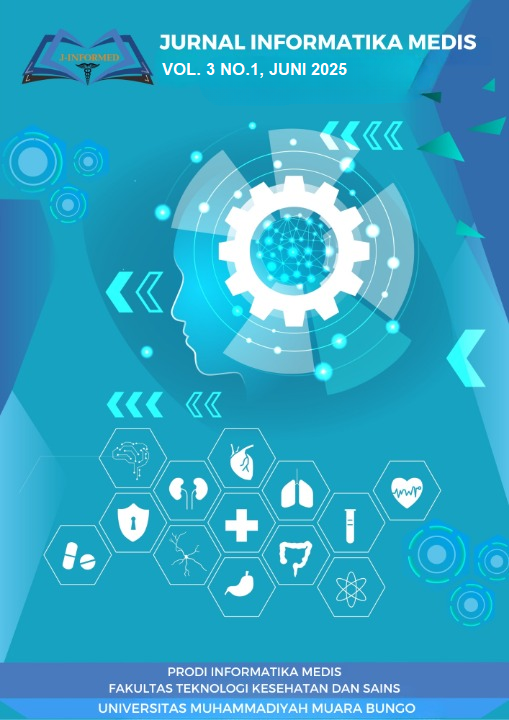PENGGUNAAN TEKNOLOGI DALAM KEDOKTERAN FORENSIK MENGHADAPI ERA INDUSTRI 5.0
Abstract
The era of Industry 5.0 is characterized by the synergistic integration of advanced digital technologies and humanistic values, emphasizing collaboration between intelligent machines and humans. In forensic medicine, this transformation offers significant potential to improve the accuracy, speed, and efficiency of post-mortem identification, wound analysis, and legal evidence presentation within the framework of criminal justice. Technologies such as artificial intelligence (AI), 3D imaging, the Internet of Medical Things (IoMT), and big data are beginning to play vital roles in enhancing forensic investigations, which were previously reliant on manual and conventional methods. This article aims to comprehensively analyze the application of these technologies in the context of forensic medicine in Indonesia. In addition to outlining the benefits and opportunities presented, this paper also explores the major challenges faced, such as infrastructure limitations, readiness of human resources, regulatory gaps, and ethical issues surrounding medical data privacy. Through a multidisciplinary approach, the article is expected to contribute to the formulation of strategic policies that support digital transformation in forensic medicine towards an adaptive and sustainable ecosystem in the Industry 5.0 era.
References
ESTEVA, A., ROBICQUET, A., RAMSUNDAR, B., KULESHOV, V., & DePRISTO, M. (2019). A guide to deep learning in healthcare. Nature Medicine, 25(1), 24–29.
GRABHERR, S., EGGER, C, VILARINO, R., CAMPANA, L., JOTTERAND, M., & DEDOUIT, F. (2017). Modern imaging techniques in forensic pathology: a review. Legal Medicine, 29, 54–61.
MADEA, B. (2015). Handbook of Forensic Medicine (2nded). Wiley-Blackwell.
NAHAYANDI, S. (2019). Industry 5.0-A Human-Centric Solutions”, Sustainability, 11(16), 4371.
NARASIMHAN, G., KRISHNAN, R., & KRISNAN, A. (2021). Fourth Industrial Revolution and Business Dynamics: Issues and Implications. Singapore: Palgrave Macmillan; Industrial revolution 4.0: transformation of job market; pp. 259–268.
O’SULLIVAN, S., HOLZINGER, A, ZATLOKAL, K., SALDIVA, P., SAJID, M.I., & WICHMANN D. (2017). Machine learning enhanced virtual autopsy. Autops Case Rep, 8;7(4):3-7.
SHIVANNA, D.B., STEPHAN, T., AL-TURJMAN, F., KOLHAR, M., & ALTURJMAN, S. (2022). IoMT-Based Automated Diagnosis of Autoimmune Diseases Using MultiStage Classification Scheme for Sustainable Smart Cities, Sustainability, 14(21), 13891.
SIBHA, M., PRAVEEN, G., SACHAN, D.K., & PARTASARATHI, R. (2021). Artificial Intelligence in Medicine. Cham Springer. pp. 1–15
WANKHADE, T.D., INGALE, S.W., MOHITE, P.M., BANKAR, & N.J.. (2022). Artificial intelligence in forensic medicine and Toxicology: The Future of Forensic Medicine” Cureus, 14(8):e28376.
XU, M., DAVID, J.M., KIM, S.H., & DAVID. (2018). The Fourth Industrial Revolution: Opportunities and Challenges”, International Journal of Financial Research, 9(2), 90–95.
| Keywords | : |
Keywords:
industry 5.0, forensic medicine, digital technology
|
| Galleys | : | |
| Published | : |
2025-06-30
|
| How to Cite | : |
Iswara, R. A. F. W. (2025). PENGGUNAAN TEKNOLOGI DALAM KEDOKTERAN FORENSIK MENGHADAPI ERA INDUSTRI 5.0. Jurnal Informatika Medis, 3(1), 6–8. https://doi.org/10.52060/im.v3i1.3064
|
| Issue | : |
Section
Articles
|








